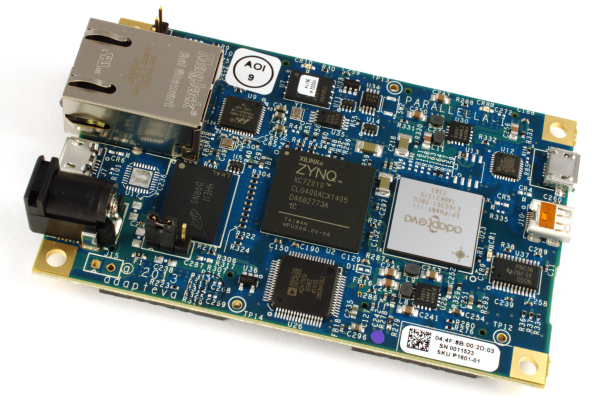This letter arrived in my inbox last week and it totally made my day!!
The author agreed to have the letter published, so here it is….
Your project, the Parallela, was the first Kickstarter campaign I joined. For me, the price was right, and as a EE, I was impressed with the idea of a 16 core computer with a novel architecture (not a fan of Power PC or Intel). There are better ways to compute without just shrinking down to 7nm FINFETS, lowering the operating voltage, upping the clock, and doing the same old DDR3-limited architecture. I didn’t expect an instant delivery, and you guys had some bad breaks: Tsunamis, one of the main hardware people leaving, supply chain problems – including bad suppliers — was a big factor in the negative operating margin. I would like to see Ericsson continue to grow the business, because I admire good hardware.
There were a number of good things that came out of this effort:
1. A new, novel computer architecture that is badly needed (should be good at multi-node wireless network simulations and latency studies)
2. Helping more people to see that the “Shark Tank” is not the way to go! VCs and Angels want everything done their way, and don’t have the soul of the business at heart. Henry Ford would never have succeeded with just VC funding. he didn’t invent the car, but he did improve the architecture.
3. Banks got Ross Perot started with EDS, and he says forget it! The Bank financing of venture companies is OVER. (was over in the early 60’s when the USA still took chances and thought BIG). Interestingly, Perot says luck is a big factor in business success – – apparently both good and bad.
3. Warning people what the pitfalls of a hardware startup actually are. I already knew about the rule of “pay yourself first” from trying a startup with another guy. Since we never got any seed money (1989 – long before Kickstarter) the pay was $0.00 (NO backers). The only one I don’t know how to handle – – – how to keep your main hardware person from leaving. This seems to affect LOTS of hardware Kickstarters – – they underestimate the time involved, become bored – – OR – – see a better opportunity down the road and DON’T share the vision! Sticking to it should involve at least 2 years of time at 50 hours per week minimum – – including ALL of the boring details.
A good Kickstarter project: Either a program (ideal) or a spreadsheet (minimum) that takes your 3 factors into account and attempts to apply economic principles (elasticity of demand) to maximize profit and arrive at a sustainable price point. This is a business plan in a box. Obviously, no program can address the luck factor. The most successful projects in terms of delivery seem to come from the easier side of the project continuum, where a guy has a fairly mature working prototype (or 5) that he has already developed in his basement – – including making it manufacturable and testable with a minimum of expansion capability and “concretely” defined features. Obviously, this is about 1/3 of the total work package done for free more or less. If he already has a board house, a manufacturer, and a supply chain in place, the job is almost done. Supplier price and availability (don’t fight with ASUS or Apple for parts) is variable, and difficult to estimate on a day to day basis.
I admire your product. Ultimately, I want to port SPICE open source to the cores and write a node-breaker that partitions the circuit to be simulated into the various cores to be matrixed in parallel. The goal – – real time analog simulation up to 1MHz. I also admire hardware done from scratch, that doesn’t completely depend on some pre-designed jack-of-all-trades board (Raspberry Pi, Beaglebone, etc.). These general purpose boards do have their place (see Kano), but for speed, everything needs to be optimized. I hope you do more Kickstarters, and that you get elected to their board of directors. Please share this email with whoever you want.
Craig Smith (Backer #4067)
“

